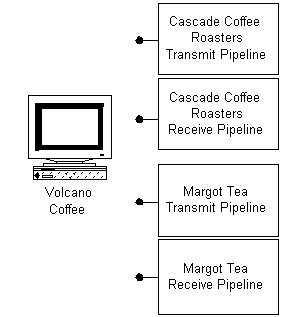



The Commerce Interchange Pipeline (CIP) architecture suggests that you can transmit any data object to any application using any transport protocol, by mixing and matching interoperable, standardized components.
Because the configuration of a transmit or receive pipeline differs depending on the trading partner for which the pipeline was configured, a different transmit pipeline and receive pipeline is created for each trading partner.

It each case, it is the pipeline configuration, stored in the .pcf file and loaded into the pipeline object, that identifies the exact configuration to be used in each case. Thus, it becomes realistic for any business to maintain any number of pipeline configurations to serve each trading partner.